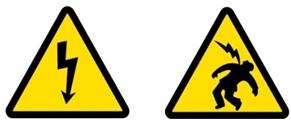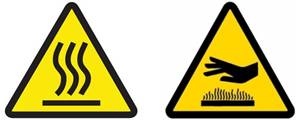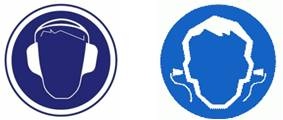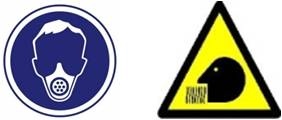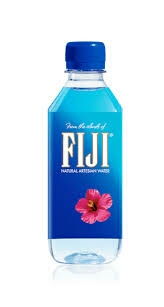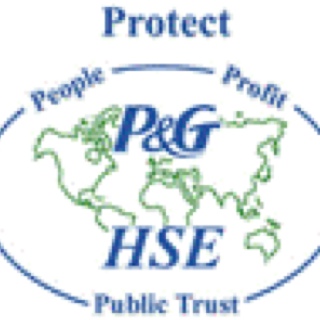Information
-
-
Equipment Name:
-
Equipment No.:
-
Supplier
-
R&D Specialist Responsable:
-
Perform by:
-
Nominal Capacity:
-
Date:
-
Location:
A – GENERAL REQUIREMENTS
A1 – RAW MATERIAL AND PRODUCTS
-
a. Is the raw material and/or product used in the equipment free of sharp edges that may cause cuts, or other hazards (ex. inhalation of gases, dust/powder, hazardous substances, skin burn from hot surfaces, eye injury from fluids or projectiles …) while loading or removal from the equipment?
-
b. Is the PPE used appropriate to the risk(s)?
-
c. Are the chemical products used in equipment identified?
-
d. Is the PPE appropriate to the product’s and process hazards?
A2 – LIGHTING
-
a. Does the machine or equipment have lighting suitable for operation and work such that there are no disturbing shaded areas and/or reflections that cause risk to the operator/ maintenance personnel?
A3 – ERGONOMICS
-
Does the equipment or workplace have appropriate conditions in accordance with the TST 000067_EHS Machine and Equipment Standard, including:
-
a. Controls in proper operating positions?
-
b. If 2 hand control is provided, is there synchronous operation, i.e. an output signal must be generated only when the two devices (command buttons) are actuated, with a time delay less than or equal to 0.5 second?
-
c. If 2 hand control is provided, can 1 or both controls be overridden (ex. tied or pressed continuously) to permit the machine to run? (also known as “anti-tie down”)
-
d. Can any part of the operator’s body access the hazard(s) while actuating the controls?
-
e. Control panel, HMI, reset, at appropriate height: (height of the operator's eye level)?
-
f. Workstation’s height between 900 mm and 1100 mm?
-
g. Cart handles with a diameter between 30 to 35 mm?
-
h. Does the operator's seat enable a stable seating position?
-
i. If the machinery is subject to vibration, does the seat reduce vibration transmitted to the operator to the lowest level that is reasonably possible?
-
j. Chairs with adjustable seat and backrest height in seated workstations? Is there space and place to support feet?
-
k. Transport carts that do not need exerted force over 20 Kgf?
-
l. Is the workstation adapted to take into account the differences in morphology, strength and endurance of the operators?
A4 – WORKSTATION
-
a. Does the workstation have sufficient space to allow the movement of the operator’s different body parts?
-
b. Is the workstation designed and engineered to avoid any risk due to the presence of gases (such as process vapors, steam, welding gas), and/or contact with hot surfaces?
B – CONTROL/SAFETY SYSTEMS
B1 – SAFETY AND RELIABILITY OF SAFETY DEVICES
-
a. Has a minimum safety category been established for the safety control system? Identify the rating.
-
b. Have the safety devices (emergency stop [button and pull cord], light curtain, 2 hand controls, safety interlock switches, safety relays ...) been installed correctly according to the safety category to which the equipment belongs?
-
c. Are safety devices (emergency stop [button and pull cord], light curtain, 2 hand controls, safety interlock switches, safety relays, ...), effective in controlling the hazards (effective when tests are executed)?
-
d. When powering the machine (startup) or mode selection (such as from manual to auto), will it not start an operating cycle involuntarily (without triggering controls, additional human action)?
B2 – SAFETY/CONTROL DEVICES
-
Are safety/control devices:
-
a. Clearly visible and identified (in a language and/or graphical symbol(s) understandable to the local user?
-
b. Arranged so as to enable their easy access
-
c. Designed so that their activation/ identification corresponds with their control effect?
-
d. Located outside the danger zones? (except where necessary for certain control devices, such as emergency stop and jog/manual control pendant)?
-
e. Situated so that its operation does not cause additional hazard(s)?
-
f. Installed as to withstand foreseeable environmental conditions (effects of impacts, heat, cold, vibration, moisture, chemicals, cleaning …) considering the type of equipment / process?<br>
-
g. From each control position, can the operator ensure that no one is in the danger zone(s), or is the control system designed and constructed that starting is prevented while someone is in the danger zone?
-
h. Single of Control - Where there is more than one control position, does the control system in use preclude the use of the others, except for stop controls and emergency stops?
-
i. When machinery has two or more operating positions, is each position provided with all required control devices without the operators hindering or putting each other into a hazardous situation?
-
j. If the machinery operation requires participation of more than one person, does the number of simultaneous actuation devices match the number of operators exposed to hazards? (the level of protection is the same for each worker).
-
k. If there are multiple switch actuation devices in use, is there a lock that prevents selection by unauthorized persons?
-
l. If two or more simultaneous actuation devices are used, is there a light signal to indicate its operation?
-
m. Do safety devices have the certificates in accordance with item 3.8 of the TST 000067_EHS Machine and Equipment Standard?
-
n. Do the wiring used for safety devices and safety circuits are standardized in orange (for ease of viewing) as defined by the TST 000067_EHS Machine and Equipment Standard (item 3.9.3)?
B3 – EQUIPMENT CYCLE
-
a. Does the equipment/machine only start the cycle by an operator’s voluntary action? (ex. through bi-manual control; or intentional human action, in addition to mode selection?<br>b. Does the number of triggering devices (ex. bi-manual) correspond to the number of operators?
-
b. Does the number of triggering devices (ex. bi-manual) correspond to the number of operators?
-
c. Are the controls protected against unintended actuation (ex. recessed pushbutton, control position or orientation, …)?
B4 – END OF EQUIPMENT’S CYCLE (NORMAL CONDITION)
-
a. Does the machine/equipment have a control device which allows its full stop safely (ex. does not create a hazard or allow access to a hazard, unless it is in a safe state)?
-
b. Does each workstation have a control device which allows, due to existing dangers, stop of all machine functions or only selected functions, so that the machine is in a safe mode?
-
c. Does the machine’s stop control have priority over the start control (cycle start)?
B5 – EMERGENCY STOP
-
a. Does the machine have one or more emergency stop devices (ex. pushbutton and/or pull cord) through which imminent or existing danger can be avoided?
-
b. Are the number of emergency devices appropriate for the number of operators and in locations near the hazard(s)?
-
c. Are the contacts of the emergency buttons self-monitoring and connected through safety rated circuit?
-
d. On performing a functional check of the emergency stop does it work properly? (stops the hazard(s), or prevents access to hazard area until the hazard is controlled or in safe state).<br>Note: an emergency stop time and distance evaluation may be needed to determine compliance. Consider worst case operating conditions, such as maximum speed/ maximum load.
-
e. In case of multiple devices in a single operator station, does triggering of a single emergency device work on all equipment in the workstation/ safeguarded space? (ex. machine and conveyor belt [global control], ...)
-
f. If the emergency device does not control all equipment in the workstation/ safeguarded space [local control], is each control permanently identified which equipment is controlled (ex. “E-stop Conveyor Only”)?
-
g. Is the emergency stop device a back-up to other safeguarding measures and not a substitute for them? (ex. safety interlocks, light curtains, …)
C - PROTECTION MEASURES AGAINST HAZARDS OF A MECHANICAL NATURE
C1 – FASTENING AND STABILITY
-
a. Is the machine, as well as its components well fastened, so to avoid their unwanted movement, which could compromise the safety devices or the safety device functions?
C2 – RISK OF PROJECTILES
-
a. Are input pipes (Conductors of energy, water, gases, fluids under pressure) attached properly?
-
b. Are the equipment’s pressure hoses (if applicable, ex. air, hydraulic, injection machines, …) properly fastened in order to avoid accidents in case of breakage?
-
c. Are machine/process hazards contained or controlled, such that under a single fault condition (ex. loss of electrical power [mains or control], vacuum, hydraulic, air, …) a risk of injury from projectiles can not occur (ex. loss of a suspended payload, a tool is separated from its mounting means, part in process becomes separated)?
C3 – RISKS DUE TO SURFACES, EDGES AND CORNERS
-
a. Does some part, external projection, or safeguard of the machine (including doors, covers, guards, perimeter fence - as applicable), have sharp corners/sharp surfaces that can cause injury?
C4 – FEATURES REQUIRED FOR SAFEGUARDS/ SAFEGUARDING DEVICES
-
a. Are the fixed mechanical safeguards attached securely, painted in yellow, and properly sized? (ex. grating dimensions, polycarbonate thickness).
-
b. Are all required safeguards in place, secured by fasteners, able to perform the safety function(s) as designed? (ex. check for broken panels, bent or damaged sections of fence/ cover/ guards, missing fasteners, …).
-
c. Can the removal/opening/dismantling of the fixed safeguards only be accomplished through the use of a tool? (ex. it is necessary to use a key to release the safeguard).
-
d. Captive Fasteners - For new machines:<br>- Does the securement means (ex. screws, fasteners) remain attached to the guard(s) or to the machinery after guard removal?<br>- Are guards incapable of remaining in place without their means of securement?
C5 – PULLEYS, DRUMS, ROLLERS, CABLES AND CHAINS/GEARS
-
a. Do pulleys, drums, rollers, cables and chains/gears have monitored fixed or moveable safeguards which prevent access to the area of risk.
C6 – DISTANCE PROTECTION
-
a. Is access to the hazard(s) protected in accordance with safe distance requirements per item 3.5.2 of the TST 000067_EHS Machine and Equipment Standard?
-
b. Does equipment supplied by conveyor belt have tunnels at the entrance and exit of parts to comply with safe distance requirements? Item 3.5.6 of the TST 000067_EHS Machine and Equipment Standard.
C7 – MOVEABLE SAFEGUARDS WITH MONITORING DEVICE
-
a. Do the moveable safeguards have a monitoring device? (ex. safety rated interlock switches, safety rated interlock hinges).
-
b. Are the monitored moveable safeguards appropriate to the hazards (ex. switch with magnetic lock for cases of residual energy to prevent access until the hazard is in a safe state)
-
c. Does the access to hazard areas with residual energy, have a button to request access? Ex. The machine moveable safeguards must remain closed and locked until the hazard is controlled (such as grinding wheels, rotating shafts, chains/ gears, …).
-
d. Are all required safeguards in place, secured by fasteners and/or moveable means (as applicable), able to perform the safety function(s) as designed?
D – RISKS DUE TO OTHER HAZARDS
D1 - ELECTRICAL ENERGY
-
a. Does the machine have voltage level identification on electrical panels?
-
b. Is the machine’s electric control and safety circuit 24V?
-
c. Are control devices separated from the power in order to control hazards during electrical maintenance? Item 3.6 of the TST 000067_EHS Machine and Equipment Standard.
-
d. Are there internal safeguards against accidental contact on busbars, and other conductive parts of electrical panels? (also known as “finger safe” design).
-
e. Are equipment and electrical panel properly grounded?
-
f. Are ground conductors, bonding wires and terminations protected from the effects of machine vibration? (ex. securement and routing of conductors, type of conductors, …)
-
g. Do electrical panels with voltage equal or above 50V in alternating current, or above 120 Volts in direct current have a key lock or require the use of a tool, restricting access only to authorized personnel?
-
h. Are there alert and warning identifications on the panel door or cover? (ex. Short Circuit and Arc Flash)
-
D2 – EXTREME TEMPERATURES
-
a. Are there equipment parts that have hot surfaces which may cause burns?
-
b. Are these surfaces identified or protected (isolated)?
-
c. If the process results in hot parts or components, are there signs warning of the hazard? (ex.)
-
-
d. Is the warning sign permanent and suitable for the end use environment? (ex. does not peel off, or separate from the affixed warning location).
D3 – NOISE
-
a. Is the machine within the established noise limits, maximum 80dB(A)?
-
b. If above 80dB(A), does the equipment have an enclosure?
-
c. If above 80dB(A), and the equipment does not have an enclosure, are there signs warning of the hazard? (ex.)
-
D4 – VIBRATION
-
a. Was the machine designed and manufactured in a way that hazard resulting from vibrations produced by it are reduced to the lowest level, taking into account the technical progress and availability of means of reducing vibration, in particular at its source?
D5 – RADIATION
-
a. Have the emissions of undesirable ionizing/non-ionizing radiation produced by the machine been eliminated or reduced to levels that do not have an adverse effect on people?
-
b. If the emissions of undesirable ionizing/ non-ionizing radiation require a sign warning of the hazard, does the equipment have appropriate precautions? (ex. ionizing, non-ionizing, laser)
-
D6 – EMISSIONS OF HAZARDOUS SUBSTANCES
-
a. Was the equipment designed so as to avoid the risk of inhalation, ingestion of hazardous substances due to the process?
-
b. Is the exhaust of gas removal devices effective, keeping the operation area free from harmful substances?
-
c. If the exhaust of gas removal devices is not effective in keeping the operation area free from harmful substances, does the equipment have a sign warning of the risk appropriate precautions?
-
D7 – RISK OF ENTRAPMENT IN THE MACHINE
-
a. Is the machine designed or equipped with a means of preventing a person from being trapped inside of it (egress), exposed to hazards? (ex. where full body access exists, it shall be possible to exit without the use of a tool, key or power)
D8 – RISK OF SLIPPING, TRIPPING OR FALLING
-
a. Is the machine designed and constructed to prevent operators and service personnel slip, trip or fall when performing foreseeable tasks (ex. tasks that require walking or standing on the machine)?
-
b. Do stairs have a safety railing at 1.2m?
-
c. Do stairs and/or access ramps have handrails installed at a 90 cm height?
-
d. Is there an appropriate place (anchor point), for tasks above 1.8 m the equipment?
-
e. Are the permanent means of access (stairs, ramps) in accordance with the Blondel Law? (check the Riser Height, Tread Length, and Stair Rule parameters for stair compliance) (item 3.9.23)
D9 – ISOLATION OF ENERGY SOURCES
-
a. Is the machine equipped with devices that isolate energy sources (electrical, hydraulic, pneumatic, gases, water ...) to lock out and identify energy sources (Lock Out/ Tag Out)?
-
b. Is there a means for each person to apply individual LOTO on the machine? (ex. if there are multiple personnel who may perform service tasks, each has their own unique LOTO locks and tag out identification)
-
c. Does the equipment have an energy source analysis sheet (LOTO SOP)? Item 3.6.2 - TST 000067_EHS Machine and Equipment Standard.
D10 – WARNING/IDENTIFICATION DEVICES
-
a. If personnel health and safety may be endangered due to a machine malfunction not subject to monitoring, does it have an adequate audible or visual warning signal?
-
b. Are the utility pipes (energy, H2O, gases, chemical products....) properly painted (color code identification) in accordance with item 3.9.18 of the TST 000067_EHS Machine and Equipment Standard?
-
c. Are warning/identification devices marked in a language and/or graphical symbol(s) understandable to the local user?
D11 – BATTERIES
-
a. Are the equipment batteries stored, secured and isolated to prevent accidents caused by overturning and/or prevent the accumulation of vapors in places occupied by operators and service personnel?
D12 – EQUIPMENT HANDBOOK & DOCUMENTATION
-
a. Does the equipment have a technical manual in accordance with item 3.7 of the TST 000067_EHS Machine and Equipment Standard?
-
b. Is the technical manual (Operation and Service) in a language and/or graphical symbol(s) understandable to the local user?
-
c. Are all technical documentation being delivered with the equipment, in accordance with item 3.7 (Figure 22) of the TST 000067_EHS Machine and Equipment Standard?







